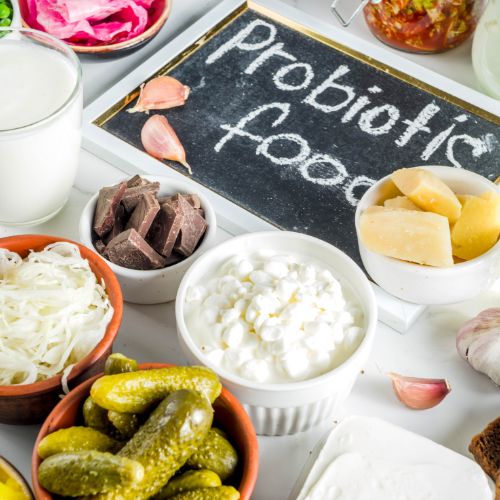Greens for Optimal Health
What is so special about greens?
Trying to figure out the optimal diet for any animal is as simple as asking any well-trained veterinarian. After all, veterinarians study the optimal diet of every species they specialize in.
On the other hand, it seems as though every person has a unique idea of the best diet for humans.
While people may disagree on vegan diets, vegetarian diets, fruitarian diets, food guides, pyramids and different dietary restrictions, very few will disagree with the concept of greens being a good source of nutrition for humans.
Greens are low calorie, low carbohydrate, very high nutrition foods that are packed with B vitamins, antioxidants like carotenoids, minerals like iron, magnesium, potassium, calcium and even vitamin K (1).
The Function of Antioxidants in The Cell
- Antioxidants are compounds for cleaning the inside of the cell
- The natural processes that take place in the cell cause the build up of cell-damaging wastes
- Antioxidants can be either fast-reacting or slow reacting and each type has a specific function in the cell
Antioxidants are compounds that can sweep away a damaging oxygen radical by accepting it.
The oxygen radical can be the product of either normal metabolism as in the process of oxidative phosphorylation in the mitochondria (energy making) or the result of damaging events such as unprotected sun exposure (2).
A free oxygen radical is a highly reactive entity that can literally zip around the cell and wreak havoc on the integrity of membranes, compromises the integrity of cells and disrupts cell signaling (3).
When it comes to antioxidant capacity, speed is a crucial attribute. The removal of the oxygen radicals is quite important for healthy cell function, however, what most researchers fail to report is that most regular antioxidants end up used up in the digestive process or very little thereafter.
Most research ignores the fact that the digestive process is a messy, highly oxidative process.
In such cases, most antioxidants end up reacting with the oxidative factors in food. Upon absorption, very little of them goes into tissues (4).
Most superficial tissues get almost no antioxidant support. Such deep tissues end up needing to rely on the body to produce antioxidants like glutathione to assist with the process of free-radical scavenging. (5)
Thus, most of the consumed antioxidants end up functioning as free-radical-load reducing agents. They are agents that reduce overall oxidative stress making it more manageable for the body. Those agents include, but are not limited to vitamin E, vitamin C and other highly reactive anti-oxidants. (5)
On the other hand, a different class of antioxidants exists in the realm of greens. Greens are very high in plant pigments.
Those pigments are responsible for the beautiful colors of the fall season. Once the chlorophyll production significantly reduces, the beautiful pigments in plant leaves shine showing the true colors and the potential medicinal benefits of the plants. (6,7)
Those pigments have a unique antioxidant feature to them, they are slow antioxidants. Weaker, slower antioxidants are ones that can remain active with good free-radical scavenging ability as they penetrate into deeper tissues.
Breeds of Greens

- A Greens juice is the supplier of a mega dose of antioxidants fast
- A Greens power is the supplier of plant fiber, laden with antioxidants and nutrients
- The body expends more energy extracting nutrients from greens powders
- The fast delivery of nutrients in a greens juice changes its functionality
The juicing theory is based on the hypothesis that providing the body with a very high dose of a diverse number of antioxidants has unique therapeutic value. The combination of both fast as well as slow antioxidants provides a unique free-radical removing capacity.(8)
This facilitates healing while at the same time, gives enough building blocks for the body. In essence, a true superfood is one that is diverse in antioxidant capability, has enough nutrient diversity and a high safety profile. (9)
The juicing theory also pioneers in the idea of removing the plant fiber to eliminate the loss of antioxidants to the oxidative environment of the gut and to enhance the speed at which nutrients and antioxidants reach the blood.
Greens and Gut Health
- Greens establish a thicker gastrointestinal lining, coating the stomach and the intestines better
- Greens may provide healthy digestive enzymes
- A decrease in overall inflammation may be influenced by the diffusion of digestive enzymes through the gastrointestinal wall
- As a booster of B 12, some sea greens like spirulina may be beneficial at enhancing rare nutrient levels independent of gastrointestinal efficiency
Greens are not only suppliers of free-radical sweepers. They are also not just suppliers of nutrients for those who can not fit green in their diet. Greens are supplied in bulk, thus that makes them function as active orthomolecular therapeutic agents.
Studies show that the consumption of greens improves stomach health and helps with the building of a better mucosal lining. The slimy mucosal lining is protective against gastritis (inflammation of stomach lining) and stomach ulcers. (10,11)
Additionally, as the nutrients are alkaline in nature, greens are healthy agents of alkalinity. Meaning, they do not disrupt digestion and may actually enhance digestion with the addition of natural digestive enzymes.
Those enzymes enhance digestion and, if supplied in high enough quantities, may cross the gastrointestinal barrier and help with the breakdown of inflammatory markers. In such cases they help maintain healthy blood fluidity, lower pain, swelling and tissue breakdown.
Spirulina

The aquatic green comes packed with many hard-to-believe super nutrients.
Spirulina is considered a high protein, complete protein food, that has more calcium than milk and more beta-carotene than carrots. (1)
It also has a significant amount of antioxidants and minerals.
Perhaps some of the least known uses of the popular detox-agent include its capacity to act as a significant immune calming agent.(1,2)
Spirulina is demonstrated to significantly reduce the inflammatory marker Interleukin 4 (IL4) in patients of allergic rhinitis.
Barley Grass

As a green juice, barley grass juice is demonstrated to be a preventer of the progression of chronic disease and a superfood that enhances immune balance.
Additionally, it is shown to maintain healthy blood sugar, blood pressure and blood cholesterol levels.
As an energy source, it is demonstrated to improve cardiovascular function and help alleviate fatigue. (13)
Perhaps even more shockingly, barley grass is shown to enhance sleep via the enhancement of healthy neurotransmitter levels. A direct effect on the levels of GABA and tryptophan were observed upon dietary supplementation of Barley Grass. (13,14)
Berries

Greens may be a source of healthy nutrients for the entire body, but pairing them with the right antioxidant berries means double the capacity of nutrients and repair.
Though all barriers have some antioxidant, health promoting effects, the less known Queen of Antioxidants shines as the berry with the highest antioxidant capacity. The Aronia berry scores an ORAC (Oxygen Radical Absorbing Capacity) of 16,062 μmol TE/100g.
Such high antioxidant/ nutrient capacity is shown to reduce blood pressure and cholesterol. Additionally it is shown to improve vascular function and gut microbiota. (15)
Aronia is also one of the safest berries as it has the least berry-medication interactions recorded when compared to other more common berries.
What Makes a Good Greens Supplement?
- Juiced as opposed to powdered
- Has proven, low temperature exposure
- A superfood, without the addition of therapeutic herbs
- Contains emulsifiers like lecithin to promote absorption
- Contains a combination of sea greens as well as land greens
- Contains no added vitamins
- Contains very little sweetener (no sugar)
- Can prove a high safety profile (third party testing)
References
-
Falquet J, Hurni JP. The nutritional aspects of Spirulina. Antenna Foundation. Available online at: https://www. antenna. ch/wp-content/uploads/2017/03/AspectNut_UK. pdf (Accessed July 25, 2017). 1997.
-
Miranda MS, Cintra RG, Barros S, Mancini-Filho J. Antioxidant activity of the microalga Spirulina maxima. Brazilian Journal of Medical and biological research. 1998 Aug;31(8):1075-9.
-
Siesjö BK, Agardh CD, Bengtsson F. Free radicals and brain damage. Cerebrovascular and brain metabolism reviews. 1989 Jan 1;1(3):165-211.
-
Dagenais GR, Marchioli R, Tognoni G, Yusuf S. Beta-carotene, vitamin C, and vitamin E and cardiovascular diseases. Current cardiology reports. 2000 Jul;2(4):293-9.
-
Marí M, Morales A, Colell A, García-Ruiz C, Fernández-Checa JC. Mitochondrial glutathione, a key survival antioxidant. Antioxidants & redox signaling. 2009 Nov 1;11(11):2685-700.
-
Craig WJ. Phytochemicals: guardians of our health. Journal of the American Dietetic Association. 1997 Oct 1;97(10):S199-204.
-
Dillard CJ, German JB. Phytochemicals: nutraceuticals and human health. Journal of the Science of Food and Agriculture. 2000 Sep 15;80(12):1744-56.
-
Chung SY, Kim HW, Yoon S. Analysis of antioxidant nutrients in green yellow vegetable juice. Korean Journal of Food Science and Technology. 1999;31(4):880-6.
-
Kim JS, Kim HY, Park YK, Kim TS, Kang MH. The effects of green vegetable juice (Angelica keiskei) supplementation on plasma lipids and antioxidant status in smokers. Journal of Nutrition and Health. 2003;36(9):933-41.
-
Yu T, Wang Y, Chen X, Xiong W, Tang Y, Lin L. Spirulina platensis alleviates chronic inflammation with modulation of gut microbiota and intestinal permeability in rats fed a high‐fat diet. Journal of Cellular and Molecular Medicine. 2020 Aug;24(15):8603-13.
-
Mahmoud YI, Abd El-Ghffar EA. Spirulina ameliorates aspirin-induced gastric ulcer in albino mice by alleviating oxidative stress and inflammation. Biomedicine & Pharmacotherapy. 2019 Jan 1;109:314-21.
-
Cingi C, Conk-Dalay M, Cakli H, Bal C. The effects of spirulina on allergic rhinitis. European Archives of Oto-Rhino-Laryngology. 2008 Oct;265(10):1219-23.
-
Zeng Y, Pu X, Yang J, Du J, Yang X, Li X, Li L, Zhou Y, Yang T. Preventive and therapeutic role of functional ingredients of barley grass for chronic diseases in human beings. Oxidative medicine and cellular longevity. 2018 Apr 4;2018.
-
Lahouar L, El-Bok S, Achour L. Therapeutic potential of young green barley leaves in prevention and treatment of chronic diseases: an overview. The American journal of Chinese medicine. 2015 Oct 12;43(07):1311-29.
-
Wei J, Xu D, Yang J, Zhang X, Mu T, Wang Q. Analysis of the interaction mechanism of anthocyanins (Aronia melanocarpa Elliot) with β-casein. Food Hydrocolloids. 2018 Nov 1;84:276-81.
-
Kulling SE, Rawel HM. Chokeberry (Aronia melanocarpa)–A review on the characteristic components and potential health effects. Planta medica. 2008 Oct;74(13):1625-34.








Leave a comment